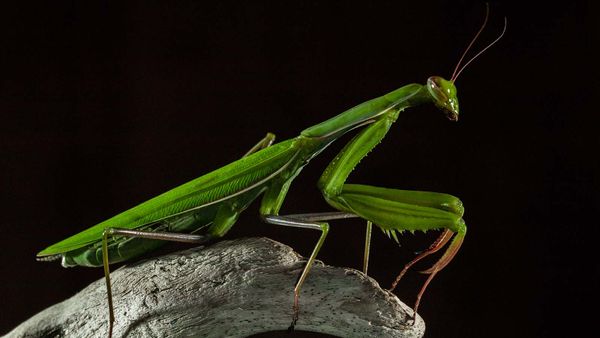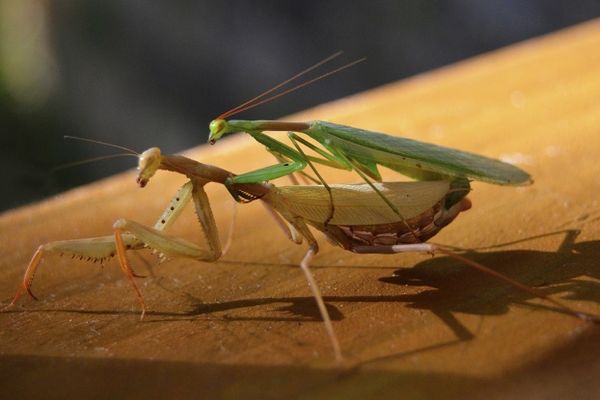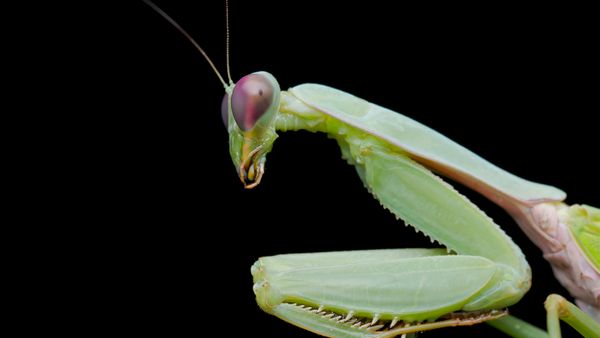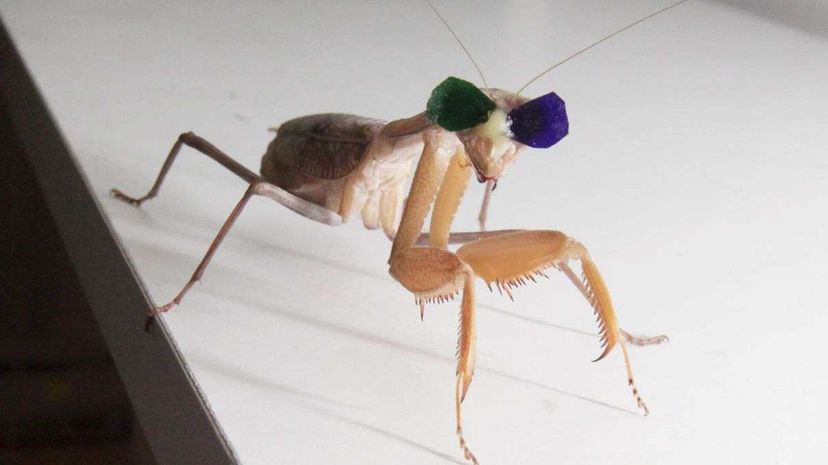
Unlike you, a praying mantis isn't going to shell out a few extra bucks to see the 3-D version of the latest superhero film at the local multiplex. But like you, mantises do perceive things around them with stereopsis — the fancy word for 3-D vision — as a new study in the journal Scientific Reports confirms.
In order to prove that, scientists at Newcastle University actually had to create a sort of 3-D movie for the insects, and then outfit them with tiny pairs of 3-D glasses. (Fortunately for their research budget, they didn't have to spring for tiny tubs of popcorn and sodas.)
Advertisement
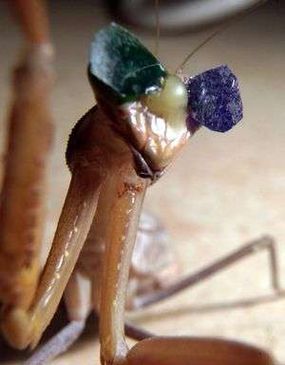
As odd as the concept might sound, there's actually a very important reason for investigating 3-D vision in members of the family Mantidae, which includes about 2,000 different species of relatively large, slow-moving insects that use their front legs to seize prey in a vise-like grip. If we can figure out how creatures with such relatively simple nervous systems manage to perceive depth, it could serve as the template for programming future generations of tiny, energy-efficient robots that could see well enough to perform all sorts of delicate tasks.
Coming Into Focus
To understand all this, first you need to grasp how 3-D vision works. When you see an object, your eyes send separate, slightly disparate images of them to your brain's optical processing system, which then uses the difference between the two pictures to calculate just how far away the object is. Being able to perceive distance accurately is a really useful survival trait for both predators hunting for food and prey hoping to avoid becoming dinner.
Scientists have spent a lot of time studying how humans and other primates see in 3-D, and they've also been able to demonstrate that other vertebrates — animals with a backbone — have it too, ranging from horses to owls. But they haven't really looked that much at invertebrates such as insects, except for mantises.
Back in 1983, University of Zurich zoologist Samuel Rossel published an article in Nature, providing evidence that mantises had depth perception by using prism lenses to interfere with how their eyes worked together. But not much had been done since then, until Newcastle University vision researcher Jenny Read was offered access to some African praying mantises by a colleague, and decided to design a more sophisticated system to study their 3-D vision.
Insect Specs
First, Read and her team fashioned tiny 3-D glasses with colored lenses for the insects. While humans wear red and blue lenses in classic 3-D glasses, mantises don't perceive red very well, so the researchers substituted green lenses for the red. To keep the glasses on the insects' heads, the scientists used beeswax as an adhesive.
Then, the researchers created what for the mantises might seem like a cinematic action thriller. They showed them short videos of simulated bugs moving around on a computer screen. When the bugs were displayed in 2-D, the mantises didn't try to catch them. But when the fake prey was shown in 3-D, which made them appear to be floating in front of the screen, the mantises struck at them. That proved that the insects used 3-D vision in hunting.
But while researchers have now verified that mantises see in 3-D, they're not yet sure exactly how they do so, as the insects have nervous systems that are vastly simpler than your big wrinkly brain. That's a subject Read is eager to probe in future experiments. As she explains in an email, human 3-D vision actually consists of several modules, which work more or less independently of one another. One of these modules, which scientists call dense stereo, perceives depth at every point in space in the central visual field, and enables you to spot camouflage by comparing it to the background.
"Mathematically, this sort of stereopsis is believed to be based on an initial calculation step called 'cross-correlation,'" says Read. "Basically, [that means] comparing patches in each eye's image, and finding patches which look similar.
"However, most people think this sort of stereopsis is much too complicated for an insect brain," she continues. "They think insects probably do something very different — identify a target in each eye individually, probably based on its motion, and then release a strike if you have a target in the appropriate location in each eye."
In order to explore the differences and similarities between human and mantis 3-D vision, Read says future experiments might involve showing the insects more complex images, including things that don't exist in nature.
Robots More Like Mantises
As we mentioned earlier, the research into mantis 3-D vision may yield insights that can be used in designing robotic vision systems. Humans, she explained, have a computational system that creates a rich map of distance across the whole visual field. But that takes a lot of meat computing power. Mantises may have a much simpler system, possibly one that detects a particular type of prey and gives instructions on whether to strike
"Mantises have been honed by millions of years of evolution to do this particular limited job extremely well, quickly, and on incredibly limited power and computational resources," says Read. "No way can our current machine 3-D algorithms run on hardware anything as tiny and low-power as a mantis. If you had robotics applications where you'd also like this one limited job done well under similar constraints, then it might be good to program a chip based on insect 3-D, rather than human."
Advertisement
